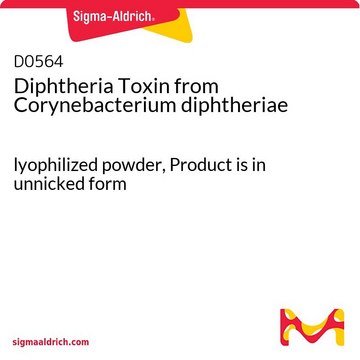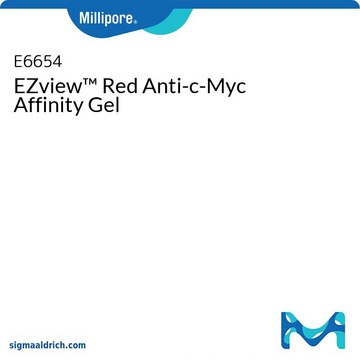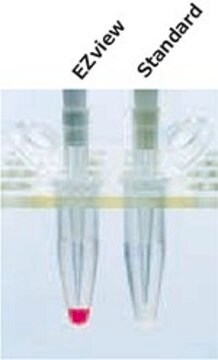Key Documents
E3403
EZview™ Red Protein G Affinity Gel
Synonim(y):
EZview Affinity Gel, Protein G Affinity Gel
About This Item
Polecane produkty
Postać
liquid
Poziom jakości
klasy chemiczne analitów
proteins (Immunoglobulins of various mammalian species)
metody
affinity chromatography: suitable
immunoprecipitation (IP): suitable
pojemność
≥8 mg/mL, gel binding capacity (rabbit IgG)
temp. przechowywania
−20°C
Opis ogólny
Zastosowanie
Cechy i korzyści
- Increased visibility - Red color reduces risk of incidental aspiration
- Improved recovery of target protein by reduced accidental loss
- Higher reproducibility - More consistent yields
Postać fizyczna
Informacje prawne
Kod klasy składowania
10 - Combustible liquids
Klasa zagrożenia wodnego (WGK)
WGK 3
Temperatura zapłonu (°F)
Not applicable
Temperatura zapłonu (°C)
Not applicable
Certyfikaty analizy (CoA)
Poszukaj Certyfikaty analizy (CoA), wpisując numer partii/serii produktów. Numery serii i partii można znaleźć na etykiecie produktu po słowach „seria” lub „partia”.
Masz już ten produkt?
Dokumenty związane z niedawno zakupionymi produktami zostały zamieszczone w Bibliotece dokumentów.
Klienci oglądali również te produkty
Nasz zespół naukowców ma doświadczenie we wszystkich obszarach badań, w tym w naukach przyrodniczych, materiałoznawstwie, syntezie chemicznej, chromatografii, analityce i wielu innych dziedzinach.
Skontaktuj się z zespołem ds. pomocy technicznej











